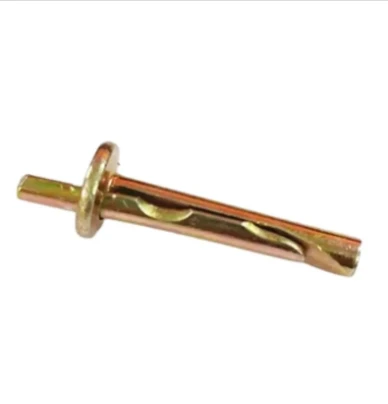Dec . 14, 2024 02:34 Back to list
Durable Carbon Steel Hex Nut for Secure Fastening Applications and Industrial Use
Understanding Carbon Steel Hex Nuts A Comprehensive Overview
Carbon steel hex nuts are small but crucial components widely used in various fastening applications across different industries. Their design, durability, and reliability make them a preferred choice for engineers and builders alike. This article explores the characteristics, applications, manufacturing processes, and advantages of carbon steel hex nuts.
What is Carbon Steel?
Carbon steel is an alloy that primarily consists of iron and carbon, with carbon content typically ranging from 0.05% to 2.0%. The specific proportions of carbon and other elements dictate the properties of the steel, including its hardness, ductility, and tensile strength. Carbon steel is known for its strength and versatility, making it an ideal material for producing fasteners like hex nuts.
Characteristics of Carbon Steel Hex Nuts
1. Shape and Design Hex nuts are named for their six-sided (hexagonal) shape, which allows for easy gripping and turning with tools like wrenches. Their shape not only facilitates fastening but also provides stability when fitted onto a corresponding threaded bolt.
2. Material Strength The strength of carbon steel hex nuts varies based on the carbon content and any heat treatment processes applied. They can withstand substantial loads, making them suitable for heavy-duty applications.
3. Surface Finish Carbon steel hex nuts typically come with different surface finishes, including zinc plating, black oxide, and plain finishes. These finishes can enhance corrosion resistance, improve appearance, and offer added protection against wear and tear.
4. Standardization Hex nuts are generally standardized according to various specifications, such as ASTM (American Society for Testing and Materials) or ISO (International Organization for Standardization) standards. Such standardization ensures compatibility with a wide range of bolts and screws.
Applications of Carbon Steel Hex Nuts
Carbon steel hex nuts find utility in numerous industries, including
- Construction Used extensively in building structures, carbon steel hex nuts hold equipment, frames, and other components securely in place.
- Automotive Industry Hex nuts are critical in automotive assemblies, securing parts like engines, transmissions, and suspension systems.
- Manufacturing Various machinery and conveyor systems rely on hex nuts to fasten components, ensuring the operational integrity of machines
.- Aerospace In aerospace applications, where reliability is paramount, carbon steel hex nuts are often used in assembly processes, given their strength and durability.
carbon steel hex nut

Manufacturing Processes
The production of carbon steel hex nuts involves several key steps
1. Material Selection Manufacturers start by selecting high-quality carbon steel that meets desired specifications, considering factors like strength, ductility, and resistance to impacts.
2. Shaping The raw steel is then shaped into a hexagonal form using forging processes, which involve shaping metal through compressive forces. This enhances the structural integrity of the nuts.
3. Threading After forging, the nuts are thread-cut to ensure they can fit securely on corresponding bolts. This step may involve various threading techniques, including tapping and rolling.
4. Finishing Finally, the nuts undergo a surface finishing process to enhance appearance and corrosion resistance. This may include processes like heat treatment, electroplating, or coating.
Advantages of Carbon Steel Hex Nuts
The benefits of using carbon steel hex nuts are numerous
- Strength and Durability Carbon steel hex nuts are robust and can withstand significant loads, making them suitable for critical applications.
- Cost-Effectiveness Compared to other materials, carbon steel is relatively inexpensive, providing a cost-effective solution for many fastening needs.
- Versatility These nuts are compatible with various bolts and available in numerous sizes and grades, catering to diverse applications and industries.
- Ease of Use Their hexagonal shape allows for easy handling with standard tools, facilitating quick assembly and disassembly.
Conclusion
Carbon steel hex nuts are essential components in the world of fastening. Their strength, versatility, and cost-effectiveness make them a popular choice in various applications, from construction to aerospace. Understanding their characteristics and manufacturing processes can help professionals make informed choices about the fasteners best suited for their specific needs. As technology evolves, so too will the methods and materials used in the production of these vital components, ensuring that they continue to meet the demands of a changing industrial landscape.


